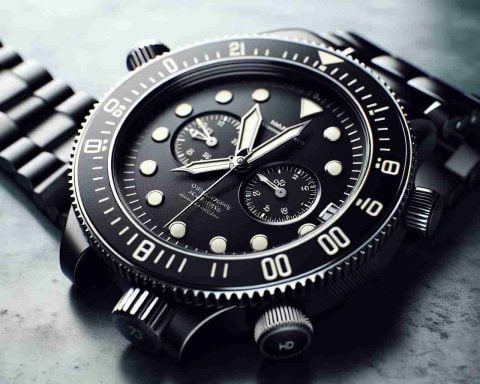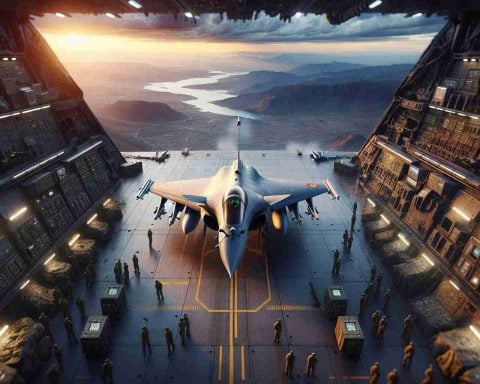A dramatic showdown unfolded last week in the skies over the Baltic Sea as two Dutch F-35 stealth jets intercepted Russian military aircraft. This strategic encounter highlights the ongoing tension between NATO and Russia in the region.
The Dutch Defense Ministry reported that two F-35 Lightning IIs from Estonia swiftly mobilized on Friday to investigate unidentified aircraft nearing NATO airspace. These missions revealed a Russian An-72 Coaler transport plane and a Su-24MR Fencer-E reconnaissance aircraft, which were closely monitored over international waters.
In a second action-packed sortie, the Dutch jets encountered an IL-20 Coot A spy plane, adding to the mounting aerial face-offs in this contested area. Such incidents have become more frequent since Finland and Sweden joined NATO after Russia’s invasion of Ukraine.
The Baltic Sea, now almost surrounded by NATO members except for Russia’s Kaliningrad and the Gulf of Finland near St. Petersburg, remains a hotspot for aerial confrontations. NATO has bolstered its air policing efforts here with the deployment of Dutch, French, and Italian fighter jets.
NATO’s strategic stance is clear and firm. As allies rotate their air defense missions, the action symbolizes the alliance’s commitment to protecting its eastern flank. Notably, about 190 Russian aircraft have been intercepted over the Baltic Sea this year alone, highlighting the region’s persistent volatility.
As the Dutch Defense Minister emphasized, NATO’s presence reassures Baltic allies of their security amidst ongoing regional challenges. The Baltic air policing mission, fortified by modern fighter jets, ensures a powerful deterrent against potential threats, showcasing NATO’s readiness to defend its airspace.
Unseen Dynamics of NATO’s Air Policing: What Lies Beneath the Baltic Skies?
Tensions between NATO and Russia have reached new heights, with the Baltic Sea region serving as a focal point for intense military activities. The recent incident involving Dutch F-35 jets intercepting Russian military aircraft underscores both the strategic importance and the evolving challenges of this region. Beyond the headlines, several key aspects and implications of these encounters deserve closer attention.
Insights into NATO’s Enhanced Air Policing Strategy
NATO’s air policing in the Baltic region is more than a series of military maneuvers; it’s a crucial aspect of the alliance’s broader strategy to maintain regional stability. By deploying advanced F-35 jets, NATO demonstrates its commitment to protecting its airspace with cutting-edge technology. The presence of such advanced aircraft is a deterrent and a reassurance to member states near volatile areas, effectively reinforcing NATO’s eastern defenses.
# Features of the F-35 Lightning II
The F-35 Lightning II is a fifth-generation stealth fighter known for its cutting-edge stealth capabilities, superior intelligence, surveillance, and reconnaissance systems. Its advanced avionics and network-enabled operations make it an ideal choice for complex missions, like those over the Baltic Sea. These jets can execute multiple roles, enhancing NATO’s ability to respond swiftly to potential threats in contentious environments.
The Strategic Importance of the Baltic Sea
The Baltic Sea holds significant strategic value as a corridor for both commercial and military navigation. Its proximity to Russia makes NATO’s presence crucial for monitoring and countering military provocations. With Finland and Sweden now part of NATO, the strategic landscape has significantly shifted, serving to encircle and contain potential Russian advances and influence in the region.
Security and Sustainability: A Double-Edged Sword
NATO’s increased aerial activity raises questions about the balance between security and sustainability. The deployment of advanced military aircraft, while formidable in deterring aggression, also necessitates considerable resources and energy consumption. NATO must navigate this dual challenge by optimizing operations to minimize environmental impact while maintaining strategic deterrence.
The Role of NATO Allies: A United Front
The cooperation between Dutch, French, and Italian forces highlights NATO’s unified front in deterring potential threats. Such integrated missions are not only military exercises but also powerful political statements of unity and resolve among allies. This coordinated effort ensures a robust defense while signaling to adversaries that NATO is prepared to act decisively.
Future Trends and Predictions
As geopolitical tensions in the region continue to evolve, NATO is likely to enhance its technological capabilities and strategic deployments. More investments in stealth technology, cyber defense, and real-time intelligence sharing among member states are anticipated. These developments will ensure that NATO remains adaptable and ready to confront emerging threats.
For more information about NATO’s strategies and capabilities, visit the official NATO website.
In summary, the challenges of the Baltic Sea region demand vigilant and multi-faceted approaches by NATO to ensure peace and stability. Such strategic maneuvers are as much about deterrence and defense as they are about demonstrating NATO’s enduring commitment to its eastern allies.
















